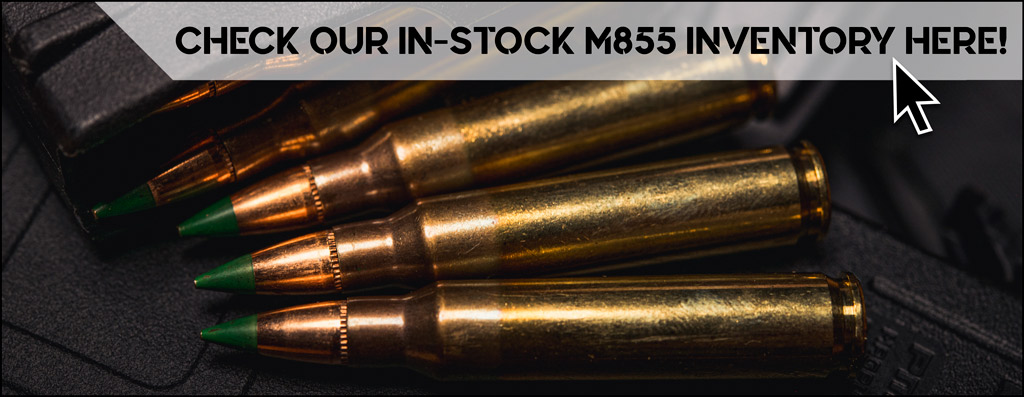
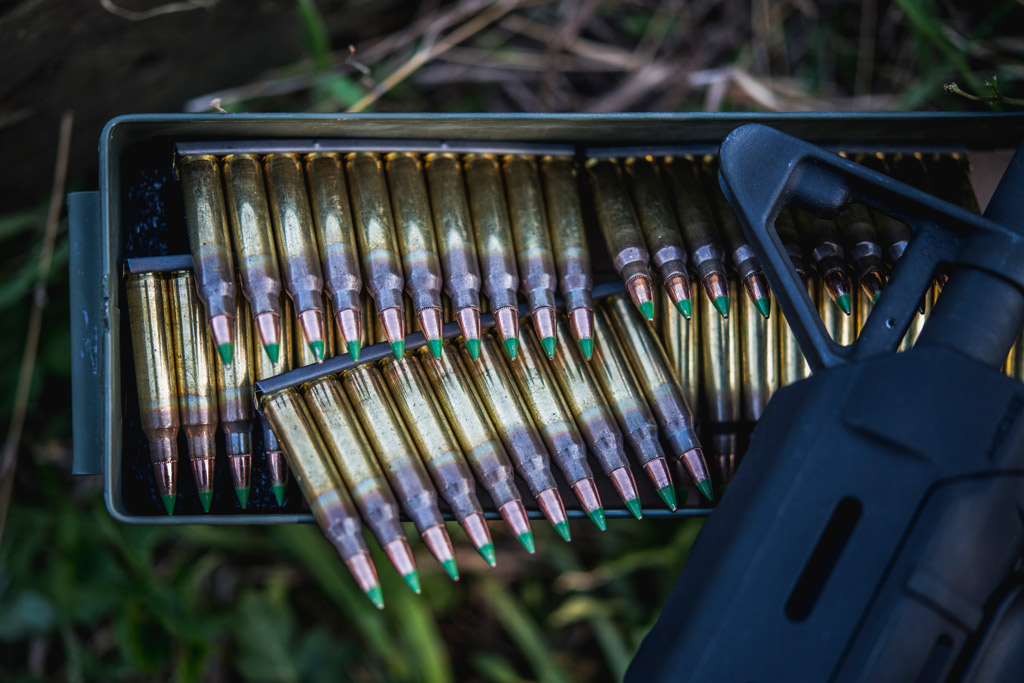
Whether you recently purchased your first AR platform rifle or have been shooting for quite some time, chances are you have probably heard the phrase “green tip ammo.” This popular 5.56 cartridge is also sometimes referred to as a “penetrator round” due to its 62-grain projectile, partially steel core, and enhanced ability to punch through hard targets.
The official U.S. military designation for green-tipped 5.56 rounds is M855. With ammo, the “M” usually stands for munitions, as the military likes to keep it simple. Simplicity and creativity are two different things. As with almost every weapon or cartridge, the military names is referred to by the letter “M” followed by a few numbers, but that’s another conversation entirely.
Most of the information you will come across regarding green-tipped ammo is fairly accurate. However, some popular misconceptions are still floating around. To make things easier, we cut through all of the hype and get straight to the facts about the M855 cartridge.
Origins Of Green Tip Ammo
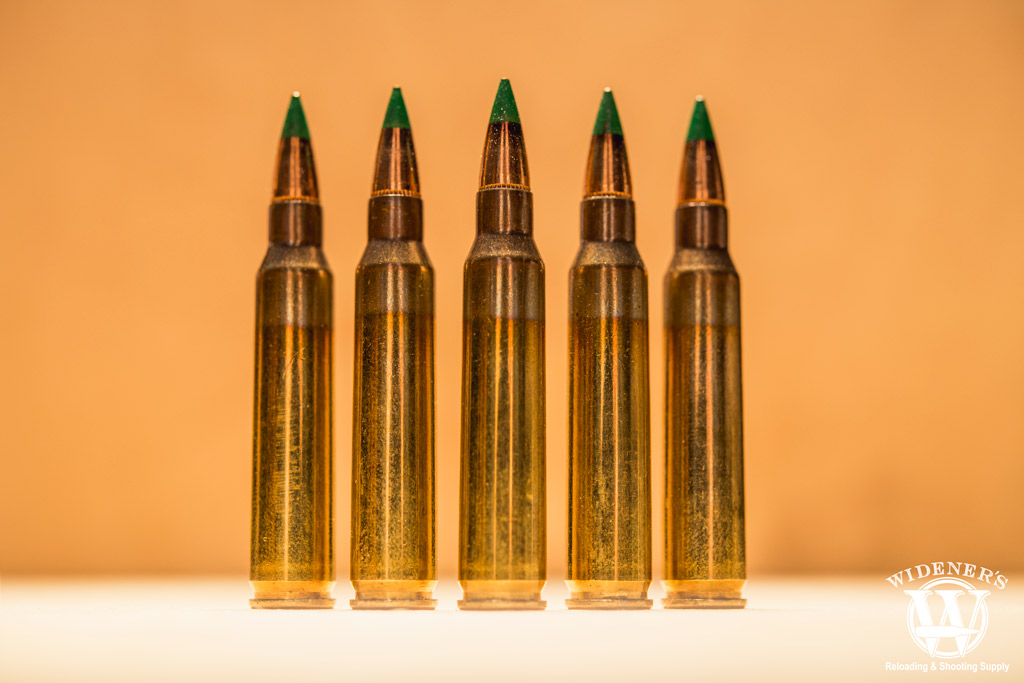
The United States Military spent the 1980s “going green” by painting all their M855 bullets.
Green-tipped ammo was originally named SS109 when it was introduced in the 1970s. The Belgian made SS109 round was entered into NATO’s standardization trials and won them. The trials were held because NATO did not have an official standardized 5.56 round at the time. NATO wanted the cartridge to offer optimal penetrating ability at extended distances, which is why the trials involved firing the rounds at steel helmets.
The United States Military adopted the SS109 to replace their M193 5.56 ammo in the early 1980s. It was renamed the M855 and the tips were painted green. This was done to help troops tell the difference between the new cartridge and the old M193 rounds. Even though the U.S. military gradually phased out the M193 rounds when they made the switch to the M855, the tradition of painting the tips of the M855 green remains.
Firearms manufacturers capitalized on this new round and quickly introduced the M855 to the commercial firearms market in the U.S. Most of these companies sell and market the green tip ammo under a different name. Even though the cartridge is virtually identical to the one that the military uses. Some companies, like Federal, just added the letter “X” onto the front of the name to indicate that the green-tipped cartridge was for civilian sale.
Can I Legally Buy Green Tip Ammo?
Currently, green-tipped ammo is legal for US civilians to own under federal law. However, certain states, such as California, have Draconian gun laws that constantly seek to limit what state residents can own. Due to these restrictions, it’s important to check up on the latest anti-gun laws in your home state before making a purchase.
The ATF and the federal government have made several attempts at banning the round in recent years. Thankfully, these attempts to circumvent the second amendment have been met with minimal success. The most recent attempt came on the heels of 2015 regulations that prohibited the use of lead ammunition on federal land. These environmental restrictions have since been lifted.
Legislators did not specifically mention the M855 round in the 2015 legislation regarding lead. However, the round does include a majority lead core and could not be used on these lands during the ban. At around the same time, the ATF also attempted to assert that green tip ammo qualified as an “armor-piercing” round. They argued that it should be banned under the 1985 Law Enforcement Officers Protection Act. They cited that the round should no longer be granted a sporting exemption due to the rise in ownership of AR-pistols.
Fortunately, the M855 does not even meet their definition of “AP” ammo because the core is 80% lead. The ATF shelved the pending ban after they received swift and overwhelming backlash, which included 53 U.S. Senators and over 200 members of the U.S. House of Representatives. The ATF definition of armor-piercing ammunition is posted below. So, yes Virginia, you can still buy all the green tip rounds you can get your hands on.
18 USC 921(a)(17):
(B) The term “armor piercing ammunition” means—
(i) a projectile or projectile core which may be used in a handgun and which is constructed entirely (excluding the presence of traces of other substances) from one or a combination of tungsten alloys, steel, iron, brass, bronze, beryllium copper, or depleted uranium; or
(ii) a full jacketed projectile larger than .22 caliber designed and intended for use in a handgun and whose jacket has a weight of more than 25 percent of the total weight of the projectile.
M855 Versus M193
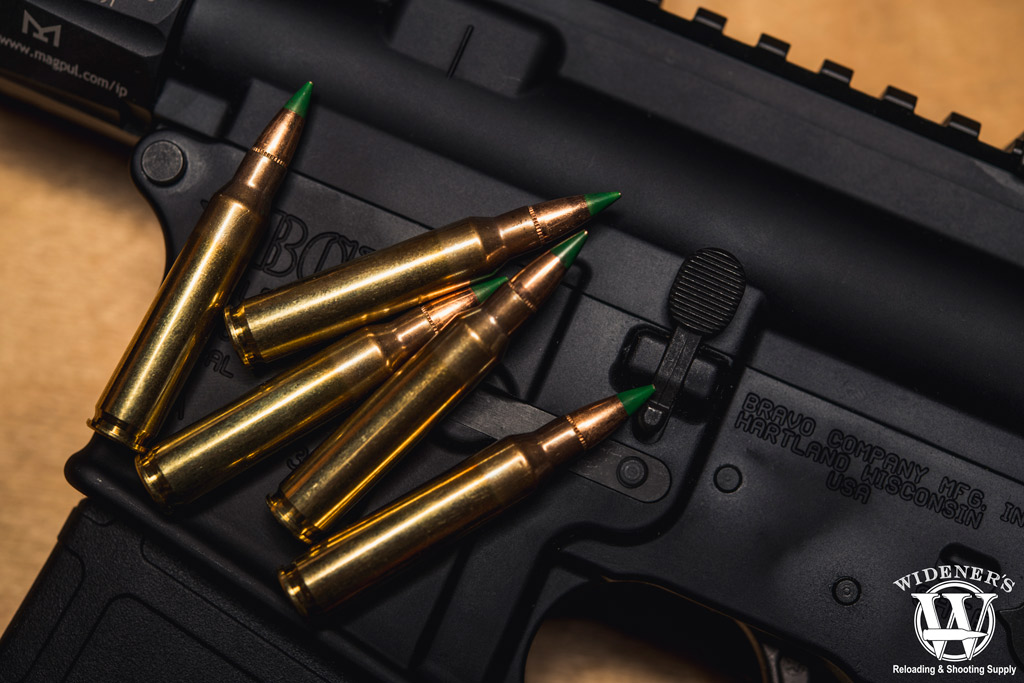
The M855 cartridge has a unique skill set, it works well with low twist rate rifle barrels and punches holes in things.
Even though they are no longer used by the U.S. Military, the civilian version of the M193 cartridge remains in continuous production by multiple manufacturers. It’s still a popular alternative to the M855 on the civilian market. The M193 cartridge contains a 55-grain boat-tail bullet that has a full copper jacket and a lead core. The term “boat tail” simply refers to the shape of the bullet, which is intended to increase the range of the round.
We often get asked which of these two rounds is better, but the answer to that question depends on several factors. If you just want to shoot paper or metal targets, M193 is your best bet. If you hunt or plan on dropping a moving target at long-distances, the M193 wins again. However, if you need to punch a hole in something, M855 is the best option. Since green-tipped ammo has a semi-steel core and is heavier than the M193, it’s better suited for certain applications.
Why Does Twist Rate Matter?
The twist rate of your rifle describes how drastic the turn of the rifling within your barrel is. The twist rate is usually expressed as two numbers separated by a semi-colon such as 1:9. A barrel with this twist rate means that the bullet will spin one revolution for every 9” of barrel length. The first number is always 1 and a lower second number equates to a faster twist rate.
Twist rates matter because they serve to stabilize the bullet. Heavier, longer bullets like those found in green-tipped ammo need faster twist rates than the lighter M193 round. The M193 was designed specifically for the Vietnam Era M16’s, which featured 20” barrels and slow twist rates of 1:12.
Picking a round suited for the rifle’s twist rate will lead to better results in terms of accuracy. The best solution is to get your hands on a few different rounds with different weights and cores to see what gives you ideal results. Since 5.56 rounds are worth their weight in gold at the moment, this is probably easier said than done.
To help your search, let’s consider 1:8 twist rates as our threshold. If your twist is 1:8 or faster, then green-tipped M855 is the way to go. If your twist is slower, 62 grain is likely going to be as heavy as you want to go, and 55 grain will usually be ideal. Remember, we are talking optimal performance at a distance as both rounds will be fine at 100 yards or less.
Green Tip Ammo Ballistics
In addition to performing better with certain twist rates, the ballistics of the M193 and M855 vary greatly. The “softer” M193 projectiles do more ballistic damage when hitting soft targets, making them a good choice for hunting applications. The M193 will fragment quite a bit and leave a huge wound cavity, especially inside of 100 yards.
You may be wondering why the M193 does so much more ballistic damage when the M855 has been dubbed “penetrator ammo.” Well, this is because the lead-steel core and added grain weight of green-tipped ammo do their job a little too good at close ranges. The M855 will usually punch clean through a target, doing minimal damage unless you hit a vital organ or important artery.
With shots over 100 yards, the ballistics comparison is a little more even. Once you surpass 300 yards, the green tips pull ahead. I won’t bore you with a physics lesson, but it involves changes in the velocity of the bullet and angle of impact as the distance traveled increases.
M855 Ammo For Sale
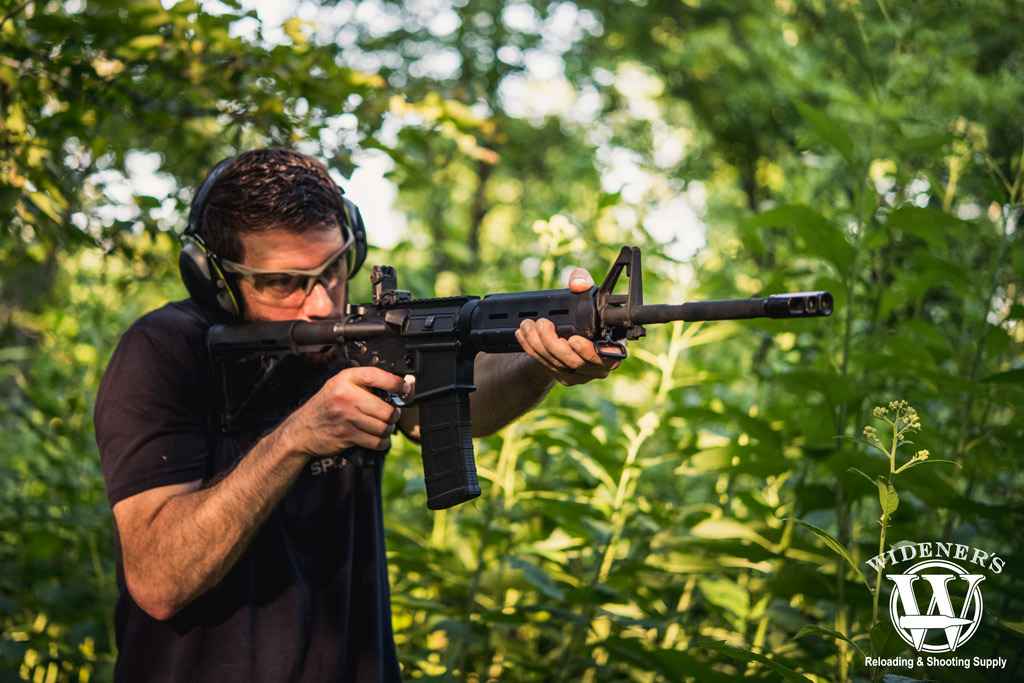
If you’re looking online for green tip ammo, be sure to search for M855, SS109, and NATO keywords.
While I am a fan of green-tipped ammo and have a healthy supply in my safe, the M193 remains a more versatile round. Using M855 as a self-defense round could lead to unwanted legal issues. Imagine explaining to a judge how your penetrator bullets ended up in a neighbors fridge across the street. The fact that M193 rounds break apart when hitting targets makes them the better choice for home defense.
If you’re looking for accuracy at distances and your rifle barrel has the appropriate twist rate, then keep some 62gr green tips on hand. Being able to punch through a barrier without needing a larger cartridge does have its advantages. Green-tipped ammo is a quality round that fires reliably and will not cause excess carbon build-up in your rifle like poorly made ammo.
When searching for green tip ammo, you’ll find a variety of options from companies such as Federal or PMC, who refer to this round as the XM855 and M855, respectively. You may also come across foreign-made rounds that still use the SS109 designation or NATO round description. Before buying, be sure to do your research. Carefully read the specs of the ammo, and make sure you are getting what you pay for.


